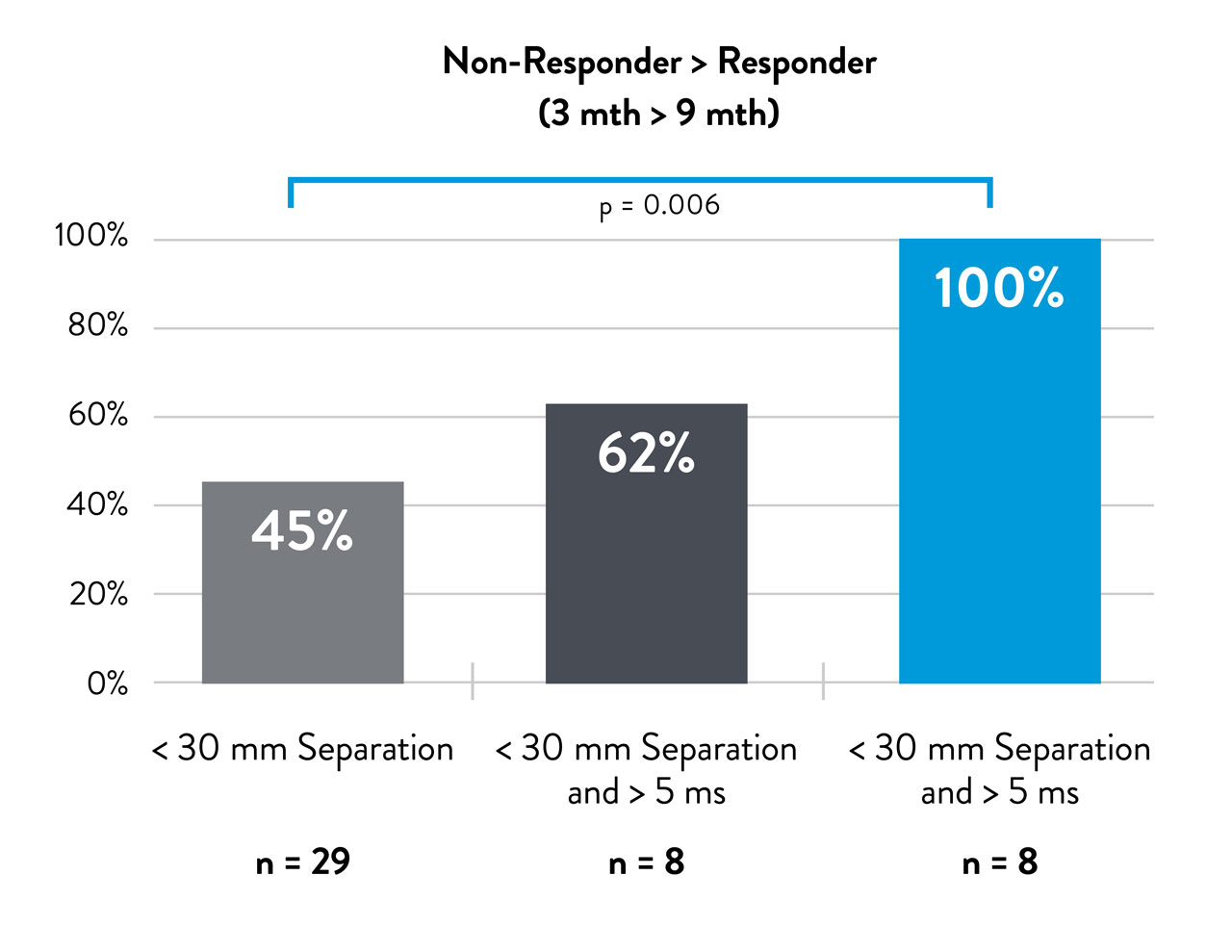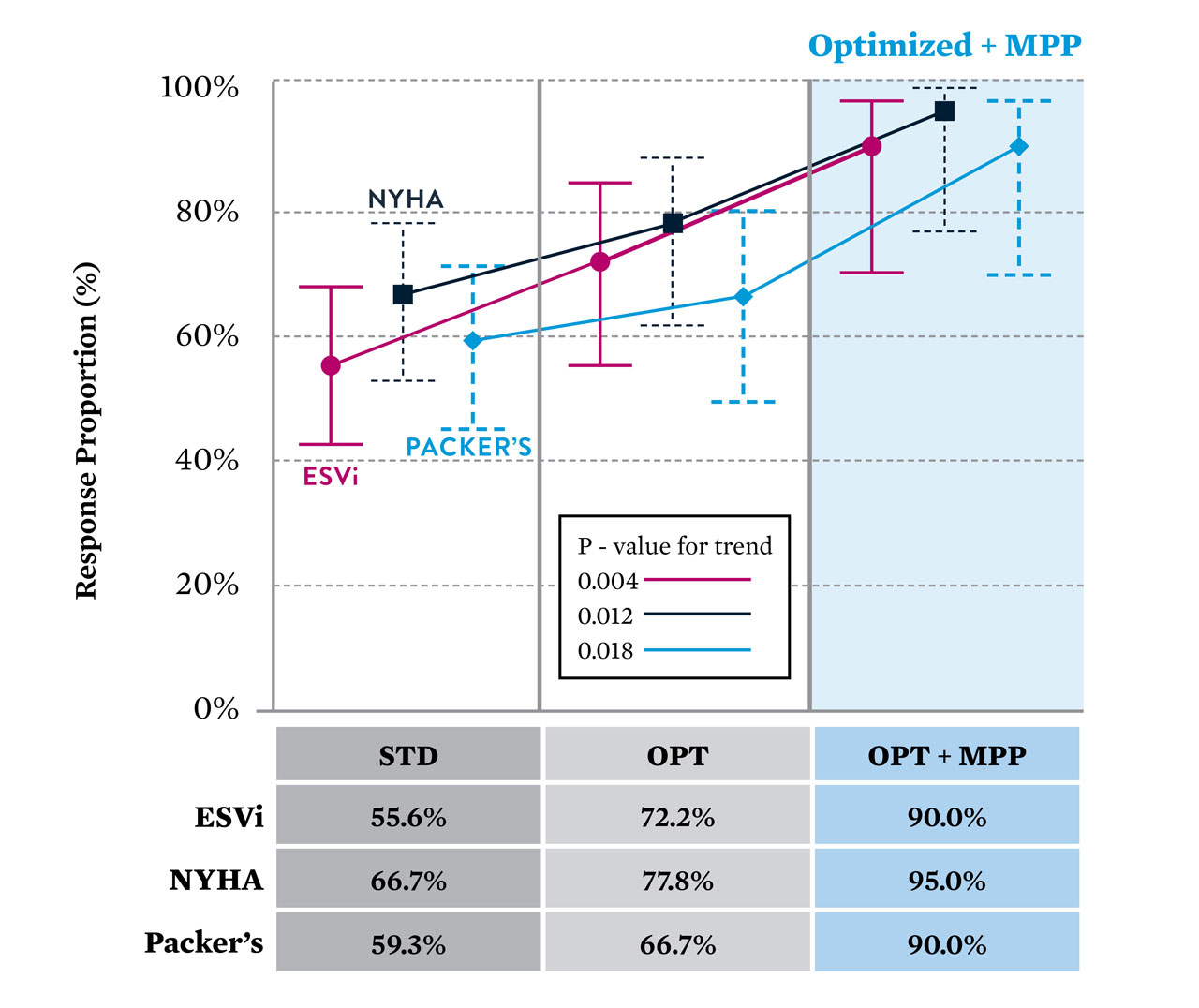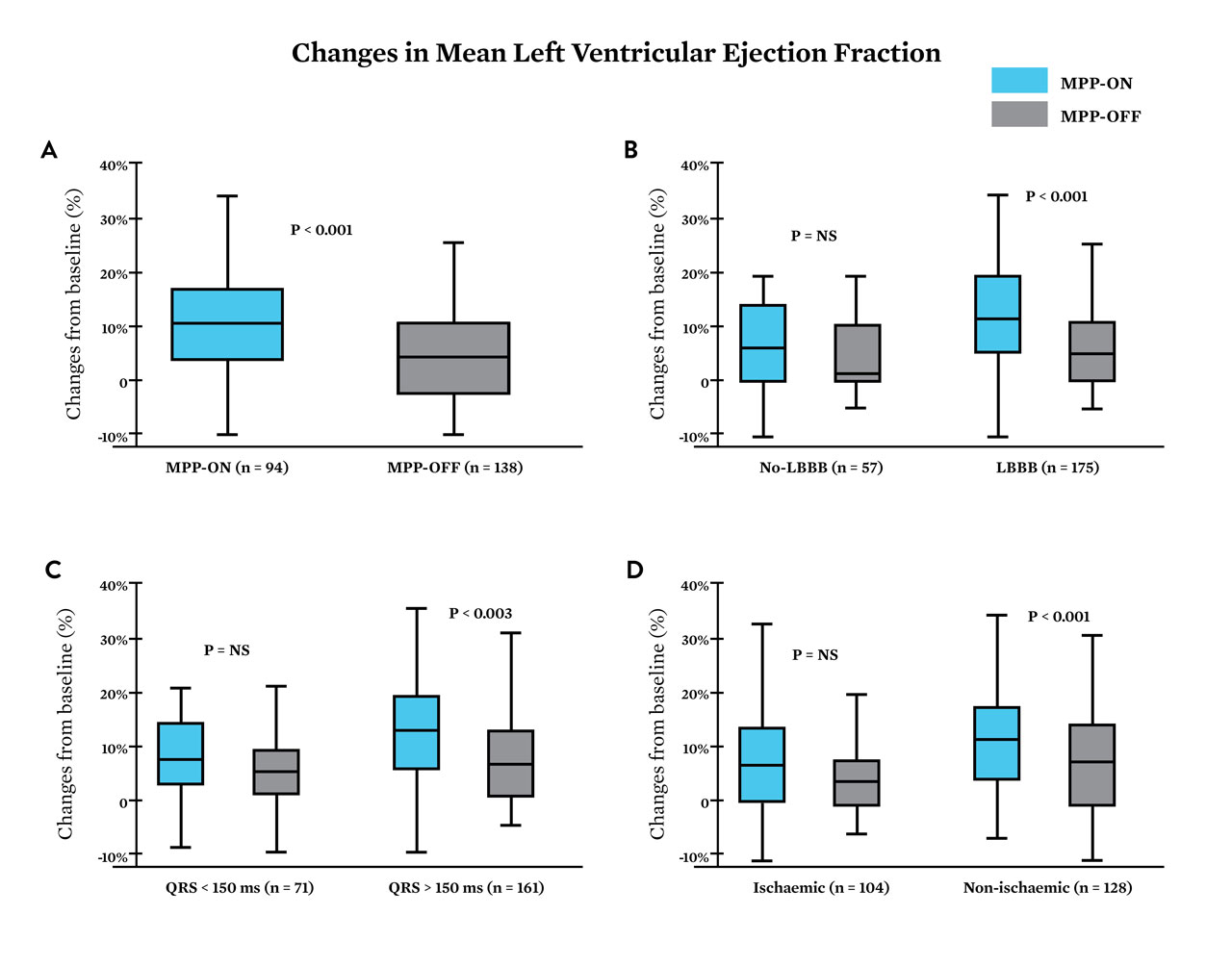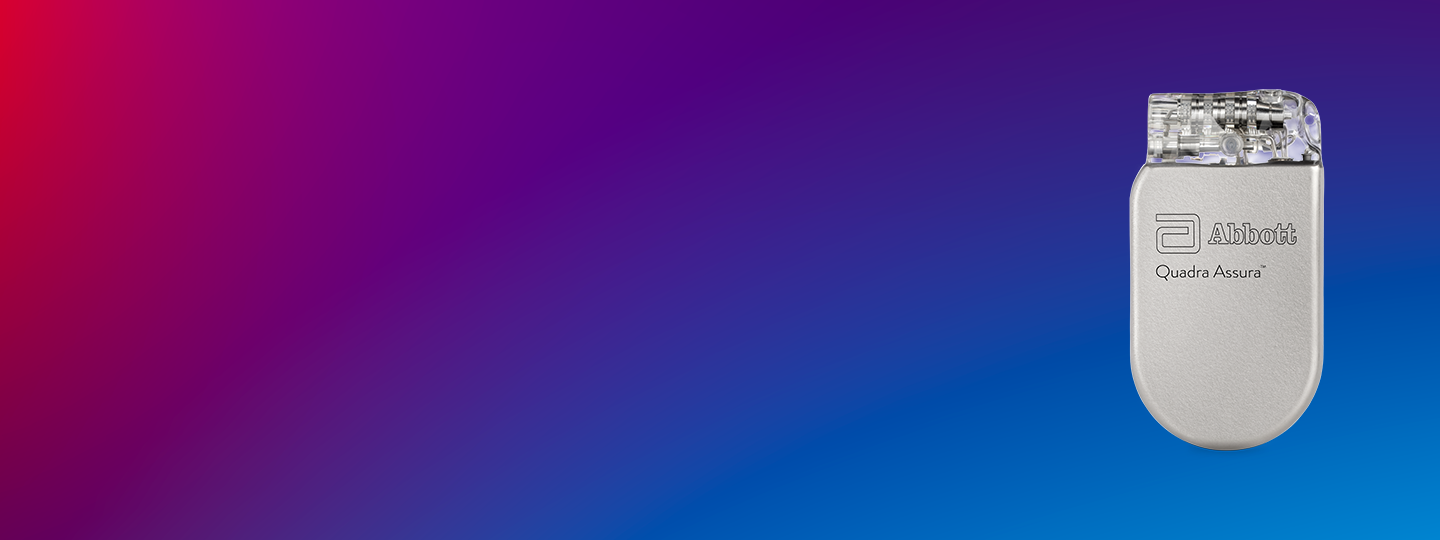A Growing Body of Evidence for MultiPoint™ Pacing
The U.S. IDE Study
Meeting Safety and Efficacy Endpoints1
The MultiPoint Pacing U.S. IDE study from Tomassoni et al. showed:
- Safety: 93.2% freedom from system-related complications1
- Efficacy: MultiPoint Pacing technology demonstrated to be noninferior to BiV with respect to non-responder rate1
Converting Non-Responders to Responders1
The sub-analysis study demonstrated that wider cathode spacing and near-simultaneous intraventricular timing delays are best.1 When MultiPoint™ Pacing technology was programmed with cathode spacing ≥ 30 mm and 5 ms LV delay:
- CRT response rate was greatest at 87% and the super-responder rate was greatest at 54% (n = 52)1
- Non-responders were converted to responders (8 of 8 patients)1
Conclusions from the U.S. IDE study include:
- MultiPoint Pacing technology has been demonstrated to be safe and effective1
- The enrolled patient population had a high response rate to quadripolar BiV pacing1
- MultiPoint Pacing technology response rates for this patient population are greatest when devices are programmed with wide LV electrode spacing and short intraventricular delay1

MultiPoint Pacing Data from International Studies
Several international studies report results related to improved patient response to CRT with MultiPoint Pacing as compared to single-site pacing.
Reported Improvements of CRT Response Rate At 12 Months2
Zanon et al. compared 20 patients optimized with MultiPoint Pacing to 36 patients optimized with traditional BiV pacing and 54 nonoptimized BiV patients.2 The results indicate a progression in response from nonoptimized BiV to optimized BiV to optimized with MultiPoint Pacing at 12 months consistently measured over three definitions of response:
- 90% response rate with MultiPoint Pacing measured by ESV decrease > 15%2
- 95% response rate with MultiPoint Pacing measured by ≥ 1 decrease in NYHA class2
- 90% response rate with MultiPoint Pacing measured by Packer’s score2

Reported Improvements in Ejection Fraction at 6 Months3
Forleo et al. compared the changes in ejection fraction (EF) in 232 patients with a 6-month follow-up.3 During implant, capture thresholds were measured as well as the presence of PNS. The results show:
- MPP technology was programmable in 97% of patients3
- 56% clinical composite score for patients with MPP technology turned on versus 38% in control group3
- 39% ± 9.6% increase from 28.2% ± 509 in left ventricular EF for patients with MPP technology turned on3
- 34.6% ± 7.6% increase from 28.1% ± 6.0 in patients with MPP technology turned off3

In summary, the Italian MPP technology registry (IRON-MPP) study showed QRS was reduced and both EF and clinical composite score improved with MPP technology relative to conventional BiV.³
Building Comprehensive Heart Failure Management
The Quadra Allure MP™ CRT-P Is one of our heart failure management therapies. Our vision is to transform the treatment of heart failure by designing technology that delivers excellent clinical outcomes and improves workflow and efficiency. Read more about our approach to heart failure management.
References
- Niazi, I., Baker, J., Corbisiero, R., Love, C., Martin, D., Sheppard, R., ... Tomassoni, G., & MPP Investigators. (2017). Safety and efficacy of Multipoint Pacing in cardiac resynchronization therapy: The MultiPoint pacing trial. JACC: Clinical Electrophysiology, 3 (13), 1510-1518. https://www.sciencedirect.com/science/article/pii/S2405500X17306084
- Zanon, F., Marcantoni, L., Baracca, E., Pastore, G., Lanza, D., Aggio, A., … Prinzen, F. (2016). Optimization of left ventricular pacing site plus multipoint pacing improves remodeling and clinical response of cardiac resynchronization therapy at 1 year. Heart Rhythm, 13(8),1644-1651. https://www.heartrhythmjournal.com/article/S1547-5271(16)30316-2/fulltext
- Forleo, G. B., Santini, L., Giammaria, M., Potenza, D., Curnis, A., Calabrese, V., … Zanon, F. (2016). Multipoint Pacing via a quadripolar left-ventricular lead: Preliminary results from the Italian registry on multipoint left-ventricular pacing in cardiac resynchronization therapy (IRON-MPP). Europace, (17 May 2016), 1-8. https://academic.oup.com/europace/article/19/7/1170/2952316
MAT-2204476 v2.0
